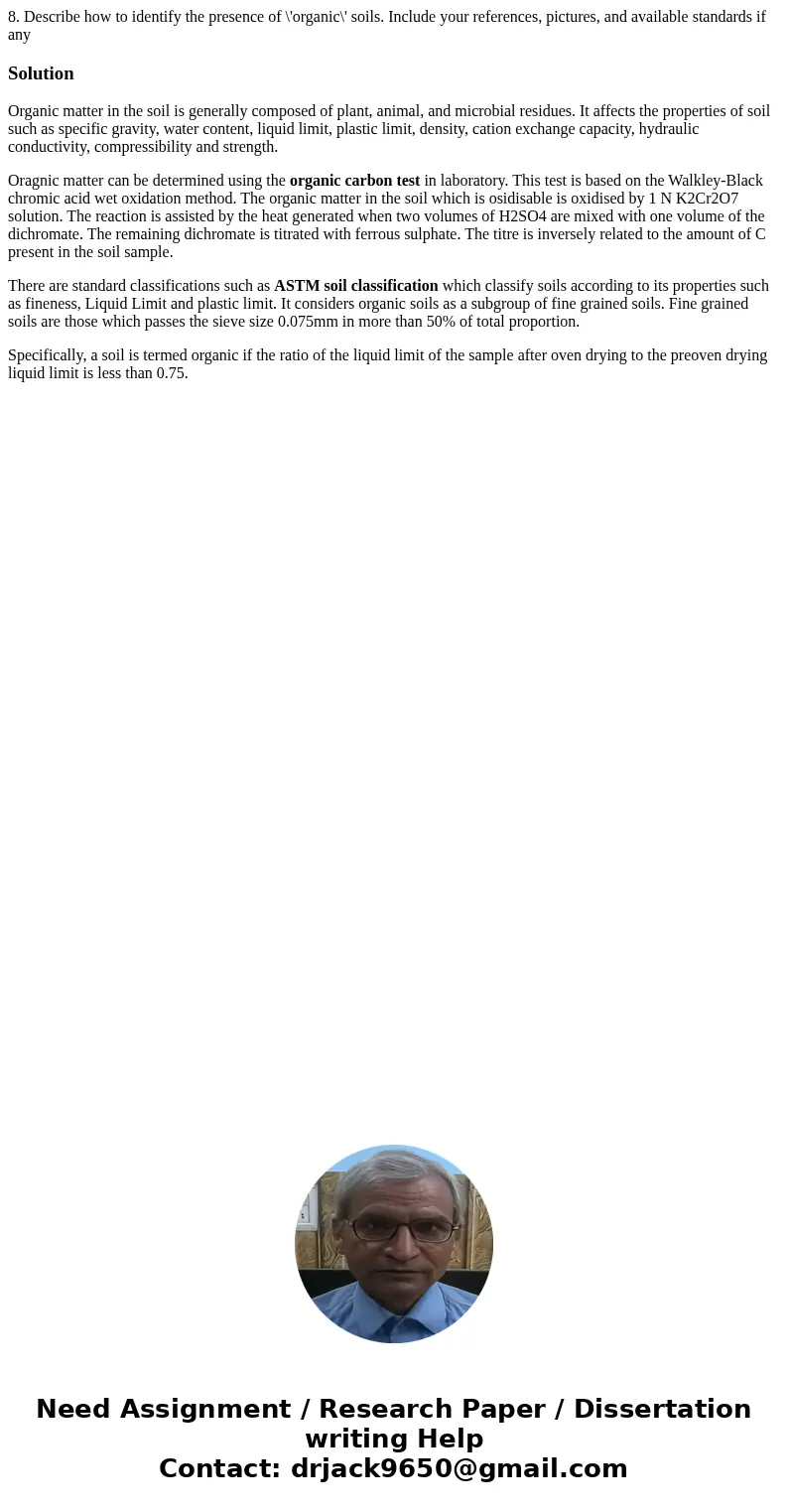8 Describe how to identify the presence of organic soils Inc
Solution
Organic matter in the soil is generally composed of plant, animal, and microbial residues. It affects the properties of soil such as specific gravity, water content, liquid limit, plastic limit, density, cation exchange capacity, hydraulic conductivity, compressibility and strength.
Oragnic matter can be determined using the organic carbon test in laboratory. This test is based on the Walkley-Black chromic acid wet oxidation method. The organic matter in the soil which is osidisable is oxidised by 1 N K2Cr2O7 solution. The reaction is assisted by the heat generated when two volumes of H2SO4 are mixed with one volume of the dichromate. The remaining dichromate is titrated with ferrous sulphate. The titre is inversely related to the amount of C present in the soil sample.
There are standard classifications such as ASTM soil classification which classify soils according to its properties such as fineness, Liquid Limit and plastic limit. It considers organic soils as a subgroup of fine grained soils. Fine grained soils are those which passes the sieve size 0.075mm in more than 50% of total proportion.
Specifically, a soil is termed organic if the ratio of the liquid limit of the sample after oven drying to the preoven drying liquid limit is less than 0.75.

 Homework Sourse
Homework Sourse